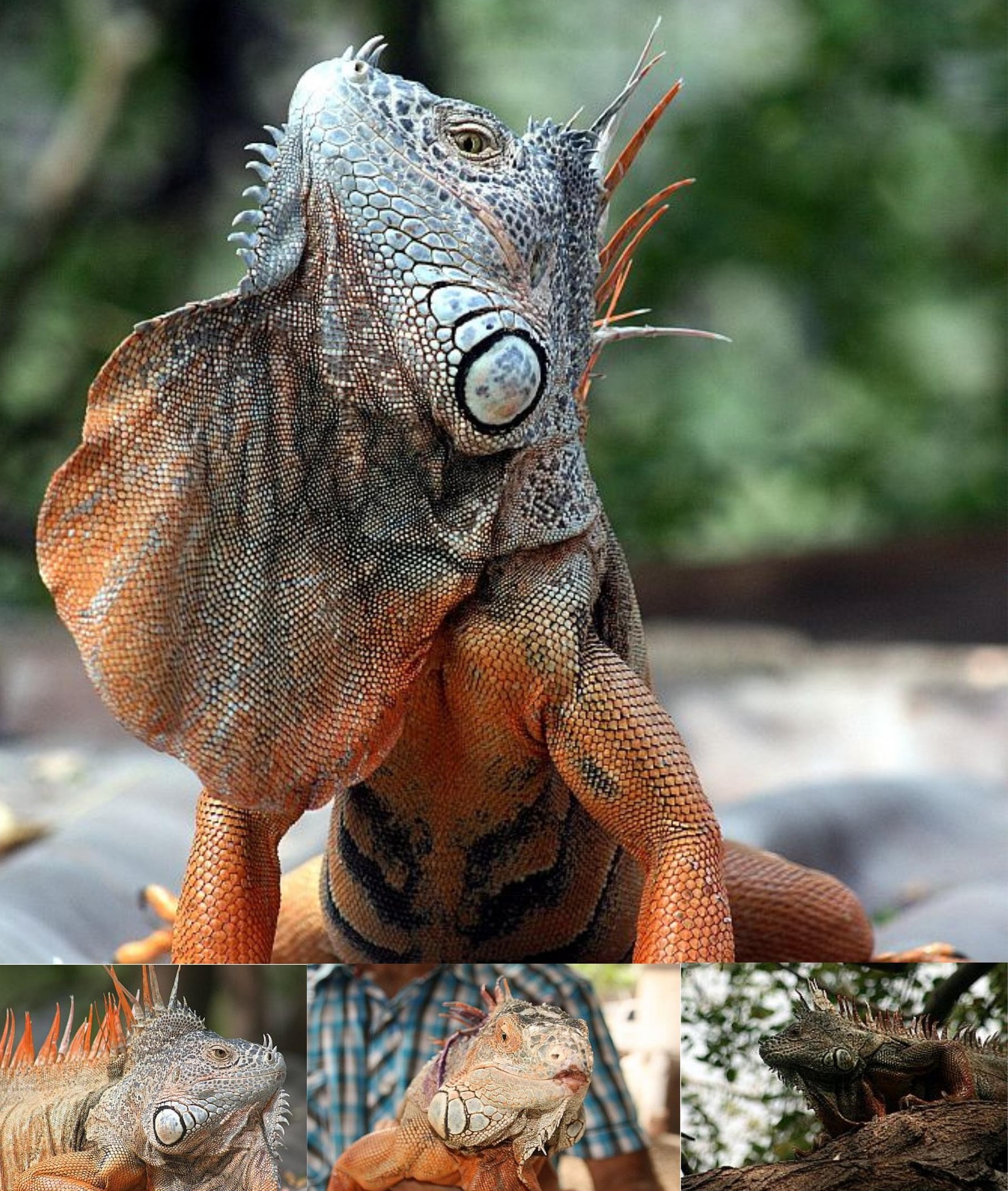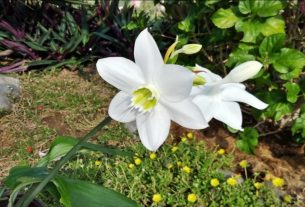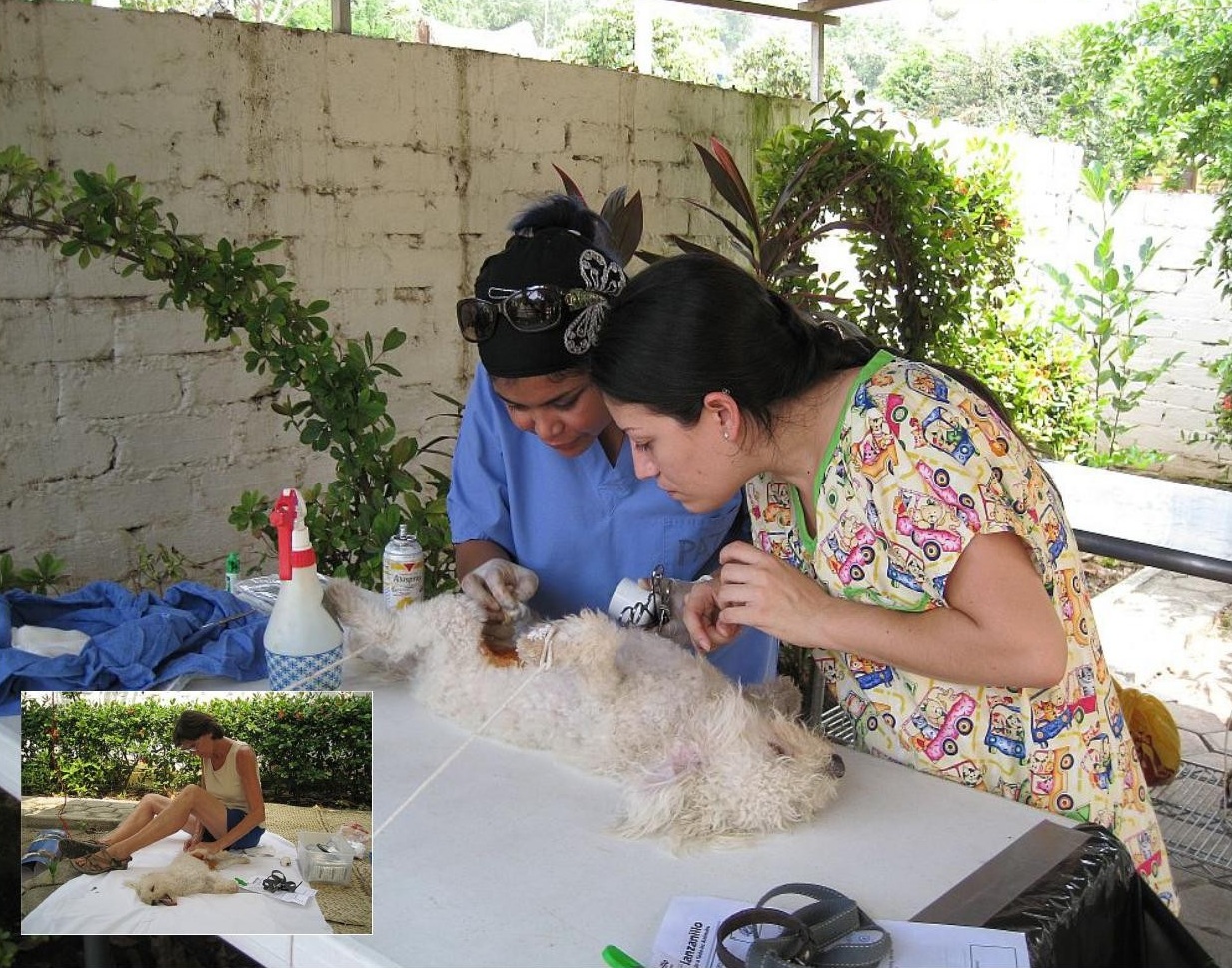By Terry Sovil from the April 2010 Edition
Fascination with green iguanas is common among residents and visitors to Manzanillo. They are fun to watch and very beautiful in their coloring. They range from southern Brazil to Mexico, the Caribbean Islands, Hawaii and even feral populations in South Florida where they are regarded as an invasive species. They are herbivores and can grow to a length of 4.9’ or 1.5 meters but some specimens have been up to 6.6’ and upwards of 20 pounds.
Green iguanas are active in the daytime and eat fruits, vegetables and leaves. They are often found near water and are agile climbers. An iguana can fall up to 50 feet (15 m) and land unhurt. An iguana swims by letting its four legs hang limply and propel with their tail.
Green iguanas are popular pets and as a food source in Latin America. They are not endangered but could be some day. They are classified as “trade must be controlled so as not to harm the species in the future”. Consider that in 1995 the USA pet trade imported 800,000! They have a calm disposition but they are very demanding to care for properly. Most iguanas bought as a pet will die within a few years. They are considered a source of meat and are sometimes called gallina de palo, “bamboo chicken” or “chicken of the tree” because they taste like chicken. So why not eat chicken?
Iguanas possess a row of spines along their backs and tails which helps to protect them from predators. Their whip-like tails can be used to deliver painful strikes and like many other lizards, when grabbed by the tail, the iguana can allow it to break, so it can escape and eventually regenerate a new one. They also have well developed dewlaps which help regulate their body temperature. This dewlap is also used in courtships and territorial displays.
When frightened they will attempt to run, and if near water will dive in and swim away. If they are cornered they extend their dewlap, stiffen and puff up their body, hiss and bob their head. If the threat is persistent they may lash with their tail, bite and use their claws in defense. The “head bobs” and dewlaps are also used in social interactions, such as greeting or courtship. The frequency and number of head bobs have particular meanings to other iguanas. Iguanas are hunted by hawks and their fear of hawks is often used to catch them. The sound of a hawk call will cause them to freeze and makes them easier to capture.
Green iguanas have excellent vision and will detect shapes and motion from long distances. Their very sharp teeth are capable of shredding leaves and even human skin. Females lay clutches of 20 to 71 eggs once per year during a synchronized nesting period. The female gives no protection after laying the eggs. The hatchlings emerge from the nest after 10–15 weeks of incubation. Young iguanas look similar to the adults in color and shape. Juveniles stay in familial groups for the first year of their lives.
So, now that you know a little about the green iguana where can you see one? You can visit the “Iguanario” right in downtown Mazanillo. Head out like you were driving to Compos. Pass the big sailfish in Centro, and at “the end” take a left on Mexico Avenue. When you come to that “really weird intersection” bear right and then left. You’ll pass a divided street and the next right on Padre Hidalgo Colony will lead you to the Iguana Sanctuary. Run by Ramon Medina and his father Juan for over 20 years this is a real treasure trove and an opportunity for great photos.
Ramon and family visit the markets each morning to purchase, or hopefully be given, fruits and vegetables to keep the iguanas fed, happy and safe. There is a small contribution pail out front so make sure you drop a few pesos in to help with the care and feeding of this unique Manzanillo resource. It seems unfortunate that the city or state isn’t helping to preserve this unique sanctuary.

Download the full edition or view it online
—
Terry is a founding partner and scuba instructor for Aquatic Sports and Adventures (Deportes y Aventuras Acuáticas) in Manzanillo. A PADI (Professional Association of Dive Instructors) Master Instructor in his 36th year as a PADI Professional. He also holds 15 Specialty Instructor Course ratings. Terry held a US Coast Guard 50-Ton Masters (Captain’s) License. In his past corporate life, he worked in computers from 1973 to 2005 from a computer operator to a project manager for companies including GE Capital Fleet Services and Target. From 2005 to 2008, he developed and oversaw delivery of training to Target’s Loss Prevention (Asset Protection) employees on the West Coast, USA. He led a network of 80+ instructors, evaluated training, performed needs assessments and gathered feedback on the delivery of training, conducted training in Crisis Leadership and Non-Violent Crisis Intervention to Target executives. Independently, he has taught hundreds of hours of skills-based training in American Red Cross CPR, First Aid, SCUBA and sailing and managed a staff of Project Managers at LogicBay in the production of multi-media training and web sites in a fast-paced environment of artists, instructional designers, writers and developers, creating a variety of interactive training and support products for Fortune 1000 companies.




You must be logged in to post a comment.